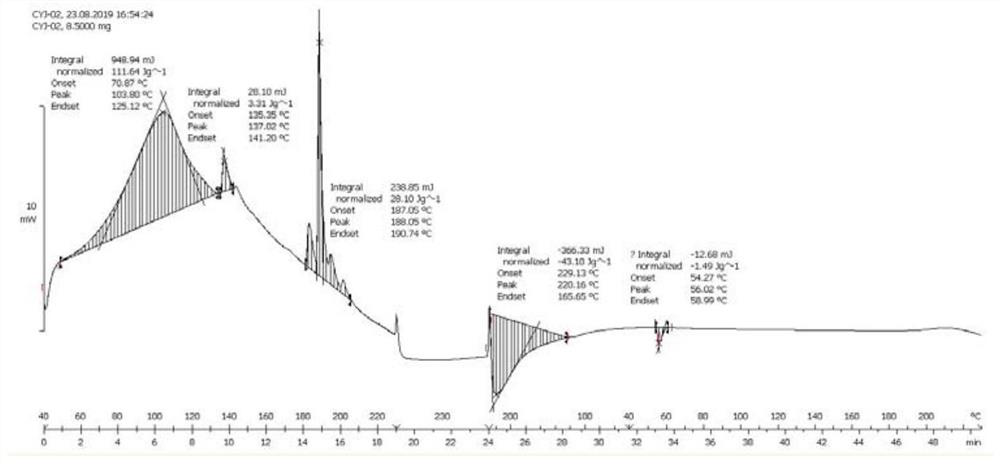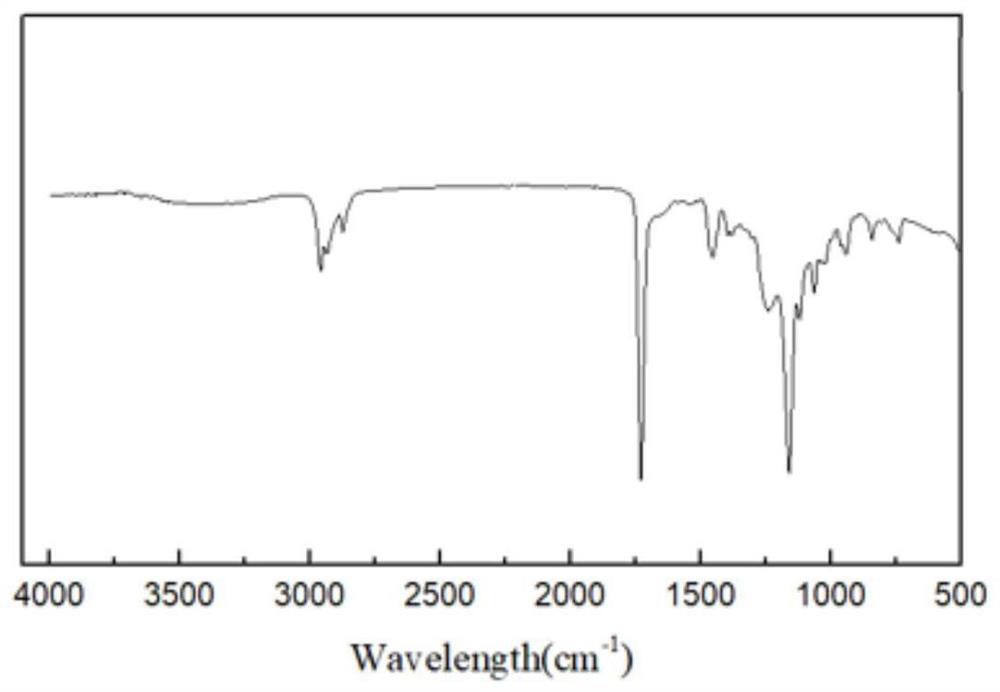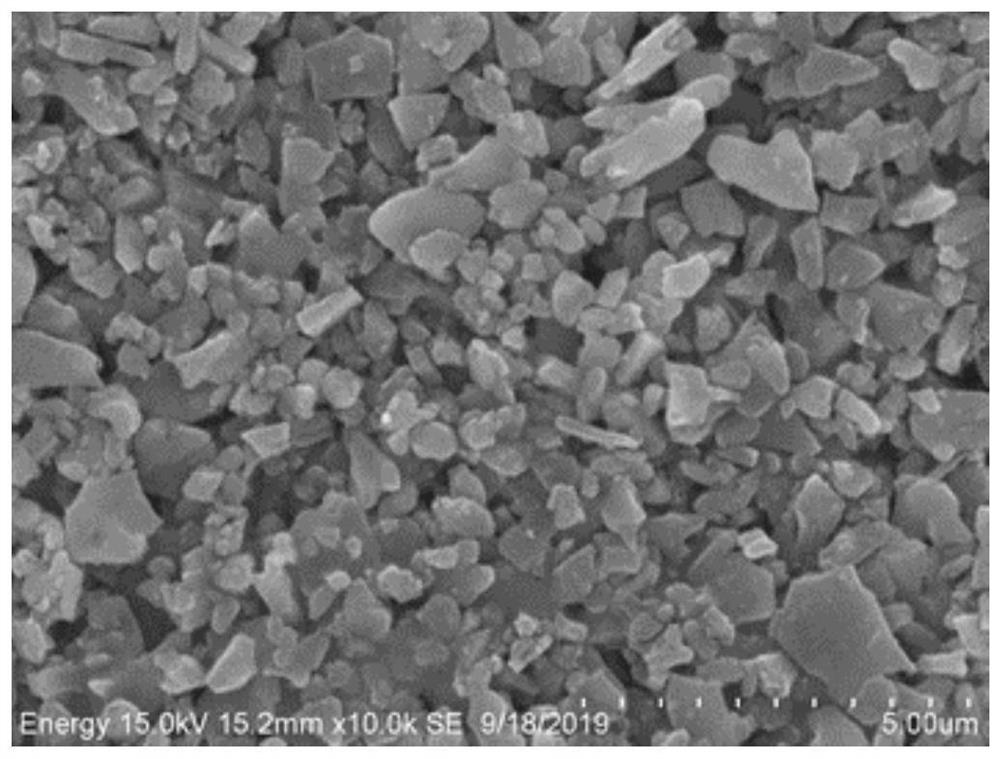High-temperature-resistant binder for lithium battery ceramic diaphragm and preparation method of high-temperature-resistant binder
A technology of ceramic binder and ceramic diaphragm, which is applied in the direction of secondary batteries, battery pack components, circuits, etc., can solve the problems of unfavorable lithium battery cycle life, easy powder drop, and increased internal resistance of the diaphragm, so as to avoid Effects of abnormal thermal runaway, good thermal stability, and low thermal shrinkage
- Summary
- Abstract
- Description
- Claims
- Application Information
AI Technical Summary
Problems solved by technology
Method used
Image
Examples
Embodiment 1
[0024] Add 1g of sodium lauryl sulfate into 300mL of water and raise the temperature to 40°C, add 0.5g of ammonium persulfate dropwise, and start adding 100g of ethyl acrylate and 0.2g of dicumyl peroxide dropwise after 30 minutes, and finish the dropwise addition within about 3 hours After 3 hours of heat preservation, a polymer with a network structure was obtained; the temperature was lowered to 50°C, and 50g of vinyl acetate and 0.5g of polypropylene glycol were added dropwise within about 2 hours. After slowly heating up to 85°C, 0.5g of potassium persulfate was added dropwise, Adding time is 2 hours. After adding, continue to keep warm for 5 hours to form a linear acrylic resin polymer. Cool down to below 40°C to obtain a latex-type interpenetrating network acrylic polymer resin.
Embodiment 2
[0026] Add 1.5g of sodium dodecylbenzenesulfonate into 500mL of water and raise the temperature to 40°C, add 1g of sodium persulfate dropwise, and after 30min, start to add 250g of isooctyl acrylate and 1g of dicumyl hydrogen peroxide dropwise, within about 3 hours After the dropwise addition, keep warm for 3 hours to obtain a polymer with a network structure; cool down to 40°C, add 100g of methyl acrylate and 1g of dicumyl peroxide dropwise within about 2 hours, and start to drop 0.3 g ammonium persulfate, the time for dropping is 2 hours, after the addition, continue to keep warm for 5 hours to form a linear acrylic resin polymer, and cool down to below 40°C to obtain a latex-type interpenetrating network acrylic polymer resin.
Embodiment 3
[0028] Add 2g of sodium dodecylsulfonate into 600mL of water and raise the temperature to 45°C, add 1.5g of sodium persulfate dropwise, and after 30 minutes, start to add 200g of butyl acrylate and 0.5g of dicumyl hydrogen peroxide dropwise, and add dropwise for about 3 hours After 3 hours of heat preservation, a polymer with a network structure is obtained; the temperature is lowered to 50°C, and 100g of acrylamide and 1g of dicumyl peroxide are added dropwise within about 2 hours, and after the temperature is slowly raised to 85°C, 0.3g of persulfuric acid is added dropwise Potassium is added dropwise for 2 hours. After the addition, the temperature is continued for 5 hours to generate a linear acrylic resin polymer, and the temperature is lowered to below 40°C to obtain a latex-type interpenetrating network acrylic polymer resin.
PUM
 Login to View More
Login to View More Abstract
Description
Claims
Application Information
 Login to View More
Login to View More - R&D
- Intellectual Property
- Life Sciences
- Materials
- Tech Scout
- Unparalleled Data Quality
- Higher Quality Content
- 60% Fewer Hallucinations
Browse by: Latest US Patents, China's latest patents, Technical Efficacy Thesaurus, Application Domain, Technology Topic, Popular Technical Reports.
© 2025 PatSnap. All rights reserved.Legal|Privacy policy|Modern Slavery Act Transparency Statement|Sitemap|About US| Contact US: help@patsnap.com



